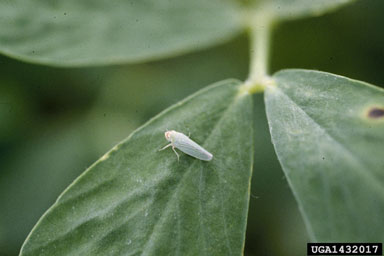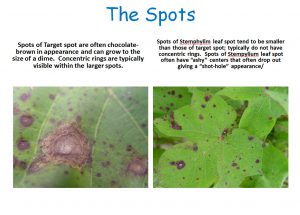Pecan Water Split – Lenny Wells UGA Extension Pecan Specialist

If you have noticed a sudden fruit shed over the last few days, you are most likely seeing the results of water stage fruit split. This is a common problem that happens annually on certain varieties and is just part of growing those cultivars. I have copied the blog post from around this time in 2014 below for further explanation:
Water stage fruit-split of pecan is often a major problem exhibited by thin-shelled pecan varieties (e.g., Schley, Caddo, Oconee, Sumner, Wichita, Frotscher, and Farley) and, to a lesser degree, by certain relatively thick-shelled cultivars (e.g., ‘Cape Fear’ and ‘Elliott’). The problem occurs when water pressure builds up rapidly inside the nut, causing the shell, seed coat, and sometimes the shuck to split about the time of the initiation of kernel filling and shell hardening, resulting in abortion and drop of damaged fruit about 7 days after splitting.
Water split is highly erratic, with incidence and severity varying depending on cultivar, location, and year. Crop loss can be severe in certain years and nearly absent in others. It occurs during the “late water stage”; a time when turgor pressure inside the nut is high and the shell is beginning to harden. This typically occurs during mid-August for susceptible cultivars growing in the southeastern U.S.
Water split is associated with rainfall occurring at the initiation of shell hardening. There are usually 2 episodes to water split. The major episode is usually triggered by rainfall (or potentially irrigation) and a relatively minor event triggered by “high humidity/low light”. Irrigation schedule, shading, and crop load also factor in.
Often, the split is inside the nut and you will simply see green nuts on the ground, which will stain a few days later. Other times when the incident is particularly violent you will see an actual longitudinal split in the shuck itself.


By the time you see water split, there’s little that can be done. Crop loss to water split is minimized, but not totally prevented, by managing soil moisture to minimize the severity and duration of water stress during the last two weeks of fruit sizing, and by crop-load thinning. Certain varieties will always have a potential for it under the right conditions. It seems to be worse when there’s been a dry spell and you suddenly get a heavy rainfall or crank up the irrigation all of a sudden. Water split also appears worse when the trees are bearing a heavy crop load. This is another reason to maintain good soil moisture and minimize water stress through the entire season. Foliar sprays of B and Ni in the spring have also led to reductions in water split.
Critical Time for The Pecan Season – Lenny Wells UGA Extension Pecan Specialist
We are at a critical time in the season for pecan production in terms of both this year’s quality and next year’s flower production.. A lot happens within a pecan tree in August. The shells are hardening and the nuts are moving into the gel stage to soon begin filling with kernel. At the cellular level, the tree is determining whether to make vegetative or reproductive shoots for the following year. With so much going on in the tree at this time, it is critical to keep them stress free through this month and the first two weeks of September.
A big part of this will be irrigation. Irrigation systems should be run at full capacity from mid August through mid September. The crop seems to me to be just a bit early this year so move up to 3600-4000 gal/acre/day about the middle of next week. Turn systems off for 3 days if you get a 2″ rain or more.
We should be nearing the end of fungicide sprays for the season. Once the shells harden any scab that gets on the nuts at that point is largely cosmetic. Many varieties like Stuart, Schley, Sumner, Oconee, Cape Fear, Creek, etc. should require only 1 more spray if they are relatively clean at this point. Susceptible varieties like Desirable and Caddo may require an additional spray beyond that, certainly if they already have a bit of scab present. Pawnee should be about done since harvest of this variety will be starting in about a month and a half.
Keeping the trees stress free right now will involve management of aphids and mites. Do all that you can to keep these pests down for the next month or so.
Dr. Will Hudson provides the following suggstions:
“Growers across the state are seeing an increase in black aphids. For growers with old Schley trees this has been going on for a while, but the other susceptible varieties like Sumner and Gloria Grande are experiencing a build-up now. Remember, if you see nymph clusters you need to take steps to protect your foliage and avoid the kind of damage that can affect your crop next year. Imidacloprid still controls black aphids pretty well, but requires the higher rate on the label (several formulations are available; the 2 lb materials need 5.6 oz/acre). Other neonicotinyls like Belay and Assail are also effective. If you also have yellow aphids then Carbine, or Fulfill would control both. Closer is one of the most effective options at the moment.
We are also seeing some mite flare-ups in scattered orchards. Mites can be controlled with abamectin products (Agri-Mek, Abba Plus, etc.), Portal, Acramite, or Nexter. The Nexter will get both aphids and mites, and may be a good choice where those pests are present and a weevil spray is needed or likely. Check labels for rates and surfactant requirements.
Dodging showers can be a challenge if you need to treat lots of acres with few sprayers, and sometimes the rain catches you or pops up right after application. If it starts to rain while you are spraying, stop the sprayer. It will do little good to apply an insecticide (or fungicide) that will be washed off immediately. If the rain comes after you finish, you may be okay if the spray has dried on the leaves. A good rule of thumb is that if you get a rain within 1 hour or less of spraying and you will need to retreat.”
Peanut “Hopper Burn” This is info from Mark Abney – UGA Exetnsion Peanut Entomologist
The insect responsible for this damage is the potato leaf hopper (PLH). It is a tiny, bright yellow-green insect that feeds on the mid-vein of the leaf causing the characteristic “v” shaped yellowing at the tips of leaflets. Hopper burn is NOT caused by three cornered alfalfa hopper. The decision to treat a PLH infestation should consider the extent of the hopper burn and the number of adult and immature leaf hoppers present. Because hopper burn will persist even after the insects are gone, we need to confirm that the pest is still present before applying an insecticide to a damaged field. We tested the efficacy of several insecticides against PLH a couple years ago and found that they were easy to kill. The only problem is that most of the products we tested were broad spectrum insecticides (pyrethroid, OP, and carbamate) that can increase the risk of secondary pest outbreaks.



Peanut Maturity Dates
Digging season will be upon us soon. Here is a list of several peanut varieties and their maturity dates.
RUNNER-TYPE VARIETIES
Agrano 914: This is an early to medium- maturing peanut (130 to 135 days). Need More Information
AUNP 17: is a medium maturing peanut (140 to 145 days). Need More Information
FloRunTM ‘107’: This is a medium- maturing peanut (135 to 140 days).
FloRunTM ‘331’: This is a medium- maturing peanut (135 to 140 days). Need More Information
Georgia-06G: Georgia-06G is a medium maturing peanut (135 to 140 days).
Georgia-09B: Georgia 09-B is a medium maturing peanut (135 to 140 days).
Georgia-12Y: This is a medium-to-late maturing peanut (140 days +) — May not follow board perfectly.
Georgia-13M: This is a medium-to-late maturing peanut (140 days +) — May not follow board perfectly.
Georgia-16HO: is a medium maturing peanut (135 to 140 days). Need More Information
TIFTNV High OL: is a medium maturing peanut (140 to 145 days). Need More Information
Tifguard: Tifguard is a medium maturing peanut (135 to 140 days).
TUFRunnerTM ‘297’: This is a medium to medium-late maturing peanut (135-145 days)
TUFRunnerTM ‘511’: This is a medium to medium-late maturing peanut (135-145 days)
Scout for Armyworms in Hay Fields
There have been some reports of armyworms in hay fields in Cook County recently. Here are comments from the Georgia Pest Control Handbook about “When To Treat For Insects In Perennial-Grass Pastures”
Foliage Feeding Caterpillars (armyworm, fall armyworm, mocis grassworms, sod webworms, yellow striped armyworm): Treat when larval populations of these insects (any one or any combination) exceeds 3 larvae (1/2″ long or larger) per square foot.
There are many options to control armyworms. Read and follow all pesticide labels and be aware of PHI days for hay and grazing.
Target Spot in Cotton
Here are some comments from Bob Kemerait on this disease, “Target spot on cotton (also Corynespora cassiicola, but a different population than on soybean) is very much observed in cotton today. Some varieties are more susceptible than others, so it behooves a grower to scout his or her field. A cotton crop may need to be protected between the 1st and 6th week of bloom. Priaxor is currently our best fungicide, but other effective fungicides include Quadris, Headline and Elatus.” Below is an image of Target Spot and Stemphylium which is often caused by potassium deficiency.
